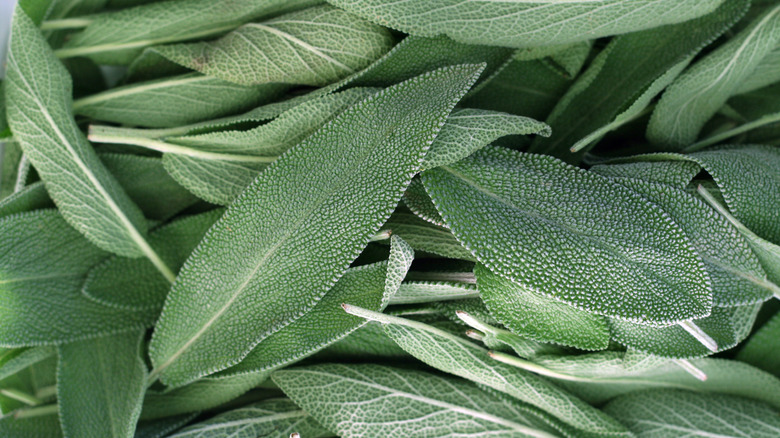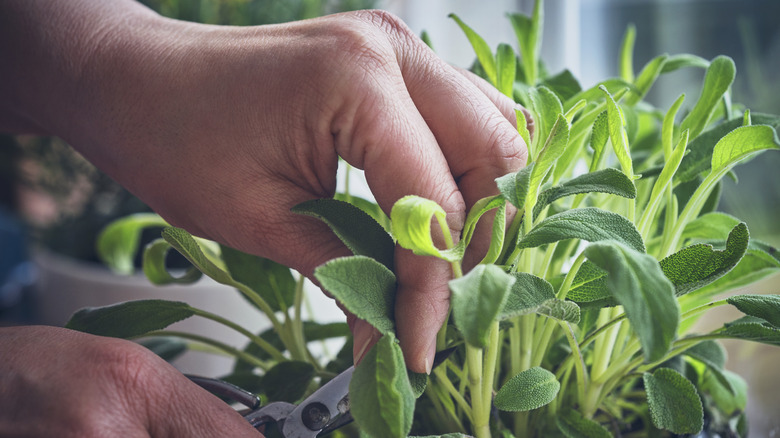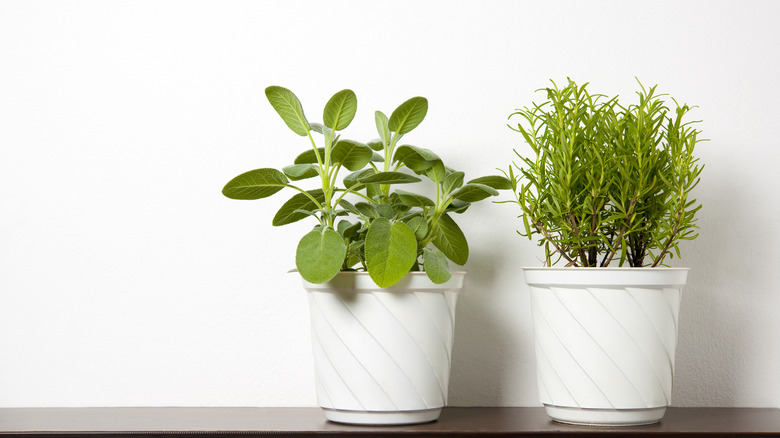Your Quick Guide For Buying And Storing Fresh Sage
Too often, an herb's role is under-appreciated and simply credited as a garnish or one of many components. Yet a fresh plant can carry an abundance of both culinary and medicinal legacy. Take sage, utilized by humans for thousands of years. Found in several distinct species across the Americas, Asia, and Europe, it has long been noted for its medicinal qualities. Used for a variety of health applications ranging from fertility to digestion, it's noted in diverse cultures from Baja to Ancient Egypt.
And not to mention, the herb is incredibly tasty, too. Readily found in both dried form and fresh form, sage delivers an unmistakable mint and earthy note. Incorporated into a butter sauce, marinade, or even a cocktail, its herbal flavor can form the backbone of a dish. Of course, to highlight the best of the plant, it's necessary to buy it in its optimal form. Dried sage's flavor aligns with slow-cooking sauces and teas. However, to really get the most potent dash of sage's aroma, it needs to be purchased fresh. In this guide, we've outlined what to look for in the store and how to properly store it at home.
What to look for when buying fresh sage
First, follow your nose. Fresh sage should have a strong, pungent smell. The exact palate differs based on the variety — some emit bright, citrus, and almost pineapple-line notes, while others have a more classic earthy aroma. Next, inspect the plant visually. Sage shouldn't have a crumpled exterior or any signs of shriveling. Tiny discolorations are normal, but large blemishes signify the plant's not too fresh. Look for sage's quintessential green-grayish hue; the more vivid the coloration, the better the plant will taste.
Another method to check sage is by holding it up straight by the stem. No leaves should fall off, and the plant shouldn't slouch or lose its shape. While not always possible, try to avoid buying sage contained in tight plastic packaging. Such conditions will likely lead to moisture buildup, causing wilting to occur quicker. These strategies also apply to storage — so here's what to do with your sage once purchased.
How to store fresh sage
Once purchased, wrap sage in a paper towel to balance its moisture content. Store in a breathable bag in the refrigerator for up to three or four days. Try to leave as many of the leaves on the stem as possible — it'll make them retain their flavors longer. If storing a large bundle of sage, store it upright in a small amount of water like a bouquet. Such a technique can lengthen the plant's shelf life to a couple of weeks.
And if there's still leftover sage, consider preserving it in olive oil. Not only will the leaves offer a similar flavor for months, but also create an infused oil that can be drizzled into a myriad of dishes. And the best method to have fresh sage on hand is to grow the plant yourself. An easy herb to maintain, a spring seeding will result in a multitude of sage that regenerates. Just make sure to pick less than a third at a time so that it's still able to regrow.


